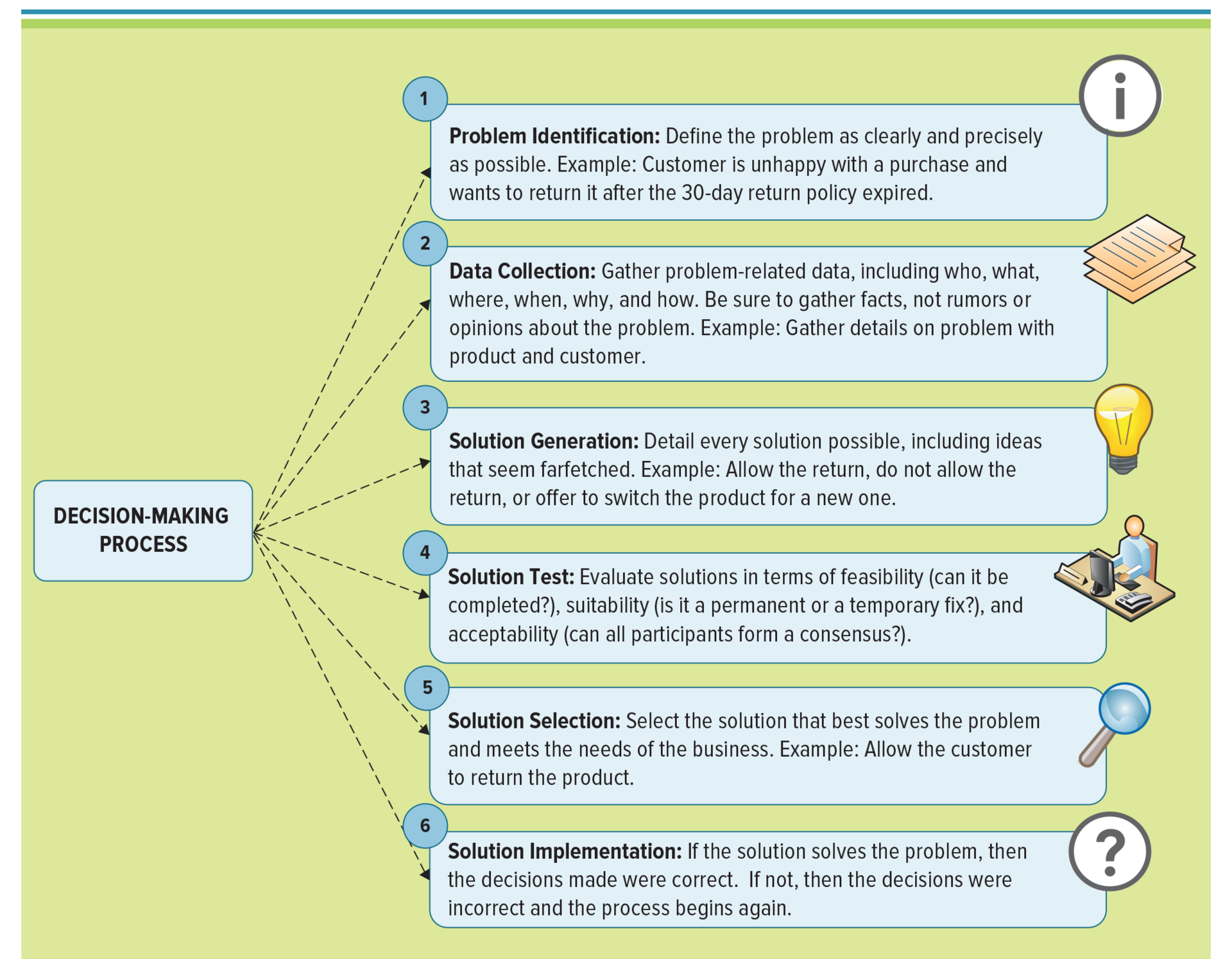Week 2: Chapter 2 - Digital Transformation: Decisions, Processes, and Artificial Intelligence
1/16
Earn XP
Description and Tags
Key notes on concepts
Name | Mastery | Learn | Test | Matching | Spaced |
|---|
No study sessions yet.
17 Terms
Decision Making Process

Operational
Definition: Employees develop, control, and maintain core business activities required to run day-to-day operations.
Decision Type: Structured Decisions.
Characteristics: These are frequent, repetitive decisions where established processes offer potential solutions. They affect short-term business strategies (e.g., reordering inventory, scheduling production).
Managerial
Definition: Employees continuously evaluate company operations to hone the firm’s abilities to identify, adapt to, and leverage change.
Decision Type: Semistructured Decisions.
Characteristics: These decisions concern how the organization should achieve its strategic goals (e.g., setting budgets or changing employee benefits). Some established processes help evaluate solutions, but not enough exists for a definite recommended decision.
Strategic
Definition: Managers develop overall business strategies, goals, and objectives as part of the company's strategic plan.
Decision Type: Unstructured Decisions.
Characteristics: These decisions involve high-level, infrequent, and important issues related to the overall long-term direction of the organization (e.g., entering a new market). No procedures or rules exist to guide decision makers toward the correct choice.
Metrics
measurements used to evaluate results and determine whether a project is meeting its goals. The two core metrics are CSFs and KPIs.
Key Performance Indicators (KPIs)
Defined as the quantifiable metrics a company uses to evaluate progress toward critical success factors.
KPIs are much more specific than CSFs (e.g., turnover rates of employees, or number of products returned).
KPIs primarily focus on efficiency (getting the most from resources, or doing things right).
Critical Success Factors (CSFs)
Defined as the crucial steps companies perform to achieve their goals and objectives and implement their strategies.
Examples include creating high-quality products or reducing product costs.
CSFs focus on effectiveness (doing the right things).
Relationship between KPI’s and CSF’s
A KPI measures the progress toward a CSF, and one CSF can have multiple KPIs associated with it.
Purpose of MIS
Management Information Systems (MIS) uses models (simplified representations of reality) to help managers calculate risks, understand uncertainty, and manipulate variables for decision making. Different support systems are aligned with the different organizational levels and decision types. Includes: TPS, DSS, EIS
TPS – Operational Support Systems
System: Transaction Processing System (TPS).
Purpose: Serves the operational level (analysts) and assists in making structured decisions.
Data/Process: Uses Transactional data (data within a single business process, supporting daily structured decisions) and utilizes Online Transaction Processing (OLTP), which captures and processes transaction data.
Systems Thinking Example: Inputs are source documents (e.g., time sheets), processing includes CRUD (create, read, update, delete) and calculations, and outputs include paychecks and reports.
DSS – Decision Support Systems
System: Decision Support System (DSS).
Purpose: Supports managers and professionals during the decision-making process by modeling information and assisting in evaluating choices.
Data/Process: Uses Analytical information (organizational data, including trends, market data, and transactional data, supporting semistructured decisions) and utilizes Online Analytical Processing (OLAP) to manipulate information for business intelligence.
EIS – Strategic Support Systems
System: Executive Information System (EIS).
Purpose: A specialized DSS that supports senior-level executives with unstructured, long-term, nonroutine decisions that require judgment and insight.
Data/Presentation: Deals with coarser information (more meaningful aggregation). EIS often relies on data from external sources (e.g., industry outlook). It uses visualization tools like a digital dashboard to track KPIs and CSFs and present information at a glance.
business process
A standardized set of activities that accomplishes a specific task by transforming inputs into outputs (goods or services). Includes Customer-facing processes and Business-facing processes.
Customer-facing processes
(front-office processes) result in a product or service received by an organization’s external customer (e.g., fulfilling orders, customer service).
Business-facing processes
(back-office processes) are invisible to the external customer but essential for effective business management (e.g., goal setting, training, resource allocation).
BPMN (Business Process Model and Notation)
Activity of creating a detailed flowchart or process map showing the structured sequence of inputs, tasks, and activities.
Graphical notation that depicts these steps.
Helps standardize processes and allows for easy communication and understanding of how business processes operate.
Mapping (As-Is, To-Be)
As-Is Process Model: Represents the current state of the operation that has been mapped, showing the process without any specific improvements or changes.
To-Be Process Model: Shows the results of applying change improvement opportunities to the current (As-Is) process.
This approach ensures the process is completely understood before implementing details of a solution and is crucial in Business Process Reengineering (BPR) projects for visualizing activities and data flow.